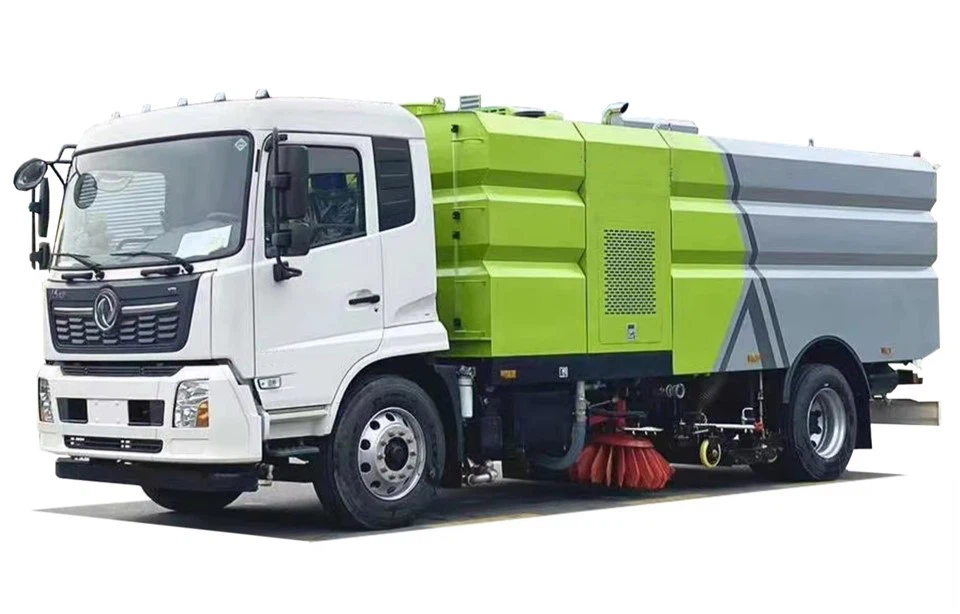How Much Does a Water Truck Weigh? A Comprehensive Guide

Introduction
Water trucks are critical vehicles in various industries, including construction, mining, and agriculture. They transport and deliver large quantities of water for diverse applications such as dust control, soil compaction, and irrigation. However, one of the most frequently asked questions regarding water trucks is, “How much does a water truck weigh?” Understanding the weight of water trucks is crucial for safety, operational efficiency, and legal compliance. This comprehensive guide will delve into the factors that affect water truck weight, the different types of water trucks, and practical examples, tips, and a FAQ section to address common inquiries.
What Is a Water Truck?
A water truck is a specialized vehicle designed to carry and distribute water. Typically equipped with a large tank mounted on a truck chassis, these vehicles are utilized across various industries. Water trucks can either be dedicated vehicles for transporting water or adapted from existing truck models.
Types of Water Trucks
Water trucks come in various types based on their design and purpose. Here are some common categories:
- Commercial Water Trucks: Used for municipal services, landscaping, and commercial irrigation.
- Construction Water Trucks: Designed for construction sites, with capabilities for dust suppression and soil stabilization.
- Agricultural Water Trucks: Used on farms for irrigation, pest control, and livestock needs.
Factors Affecting the Weight of Water Trucks
The weight of a water truck varies based on several factors, including:

1. Truck Size and Design
The size and design of the truck chassis play a significant role in determining the overall weight. Larger trucks typically have a greater carrying capacity, but they also weigh more, affecting their load-bearing capabilities.
2. Tank Capacity
Water tanks come in different sizes, usually ranging from 1,000 to 6,000 gallons. The tank’s capacity significantly influences the truck’s weight when filled with water.
3. Construction Material
The materials used to construct both the truck and the water tank can vary in weight. For example, aluminum tanks are lighter than steel tanks, impacting the overall weight of the vehicle.

4. Additional Equipment
Water trucks are often equipped with features like pumps, hoses, and spray systems. These additional components add to the total weight of the truck.
How Much Does a Water Truck Weigh? Tables and Comparisons
The weight of water trucks can vary significantly depending on the type and specifications. Here’s a table that outlines the weight of different types of water trucks:
| Water Truck Type | Empty Weight (lbs) | Filled Weight (lbs) |
|---|---|---|
| 1,500 Gallon Capacity | 10,500 | 15,500 |
| 3,000 Gallon Capacity | 12,500 | 24,500 |
| 6,000 Gallon Capacity | 15,500 | 42,500 |
Example Calculation: Total Weight of a Water Truck
To understand how to calculate the weight of a water truck, consider the following example:
Example Calculation Steps
- Select truck type: 3,000 Gallon Capacity.
- Find the empty weight: 12,500 lbs.
- Calculate the weight of water: 3,000 gallons × 8.34 lbs/gallon = 25,020 lbs.
- Determine the filled weight: 12,500 lbs + 25,020 lbs = 37,520 lbs.
Practical Tips for Managing Water Truck Weight
1. Understand Local Regulations
Weight limits can vary by location, depending on local laws. Always check and comply with weight regulations in your area to avoid fines and penalties.
2. Regular Maintenance Checks
Routine inspections of the truck’s components, especially the tank and chassis, can identify weight-related issues before they become significant problems.
3. Load Management
Monitor the load on the water truck to avoid exceeding its weight capacity. Overloading can lead to safety hazards and vehicle damage.
4. Custom Modifications
Consider customizing your water truck for specific tasks to optimize weight distribution, enhancing performance and safety.
Environmental Impact of Water Trucks
Water trucks play an essential role in dust control and landscaping, which can positively affect the environment. However, their operation can lead to emissions and potential water contamination if not managed properly.
Best Practices for Eco-Friendly Water Truck Use
- Use biodegradable products: When treating water for dust control, consider using eco-friendly additives.
- Monitor water sources: Ensure that water sources are sustainably managed.
- Optimize routes: Plan efficient routes to minimize fuel consumption and emissions.
Comparative Analysis: Water Trucks vs. Other Water Transport Methods
Water trucks are just one way to transport water. Here’s how they compare with other methods:
1. Water Tankers
Water tankers are typically larger and designed for long-distance transport. They can carry more water than standard water trucks but may require specialized equipment for loading and unloading.
2. Pipelines
For permanent water delivery systems, pipelines are more efficient. However, they require a significant upfront investment and are not as flexible as water trucks.
3. Water Reservoirs
Reservoirs can store large amounts of water but do not facilitate transport. Water trucks are essential for moving water to locations that lack immediate access to a water source.
Understanding the Role of Water Trucks in Various Industries
Water trucks serve a range of industries. Here are some examples:
1. Agriculture
In agriculture, water trucks are vital for irrigation, ensuring crops receive the necessary water supply, especially in arid regions.
2. Construction
Construction sites use water trucks for dust control, making the work environment safer and compliant with air quality regulations.
3. Mining
Mining operations utilize water trucks for suppressing dust and controlling temperature in the extraction process.
4. Landscaping
Water trucks facilitate landscape irrigation and maintenance, especially in extensive commercial projects.
FAQ Section
1. How much water can a typical water truck hold?
A typical water truck can hold between 1,000 and 6,000 gallons of water, depending on the design and intended use.
2. What is the average weight of an empty water truck?
The average weight of an empty water truck ranges from 10,000 to 15,000 pounds, varying based on the size and materials used.
3. Are there weight limits for water trucks on highways?
Yes, weight limits can differ by state and region. It’s essential to be aware of local regulations to avoid penalties.
4. Can water trucks be used for any type of water?
Water trucks can deliver various types of water, such as potable water, irrigation water, or water for dust suppression, depending on the tank’s specifications.
5. How do I maintain a water truck?
Regular maintenance includes checking the tank for leaks, inspecting the truck’s braking and suspension systems, and keeping the water pump in good working condition.

6. Can water trucks operate in winter conditions?
Yes, water trucks can operate in winter conditions, but operators should ensure that the water does not freeze in the tank or lines. It may be necessary to use additives to prevent freezing.
